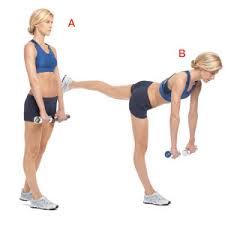Many gym goers will spend a lot of time training their quadriceps by doing squats, leg press & lunges but neglect their hamstrings. The hamstring are just as important as the quadriceps because your hamstrings cross the knee and hip joints, they work to bend your knees and draw your hips backwards. When executing explosive movement, these muscles play an important part in shifting the load from your knees to your hips.
They also contribute to your ability to absorb the shock of movements involving high velocity or force. While your hamstrings contribute to functional motion, such as walking, they help you to achieve speed, power and agility in many sports. For example, a sprinter’s performance pivots on strong hamstrings.
The movements below are the best you can do to develop thick, strong hamstrings.
Move No. 1: Romanian Deadlifts
RDLs torch the hamstrings in the most athletic way possible, as a hip extensor and contributor to a properly functioning posterior chain. I generally keep reps between 8-10 when doing this exercise, try going heavier rather than lighter.
Move No. 2: Eccentric Glute Hamstring Raises
The reason many sprinters injure themselves is because of their hamstrings’ poor ability to decelerate the lower leg to stop it from extending. Exercises that focus on the eccentric strength of the hamstrings are a crucial strength tool. The best news is that you can achieve this using bodyweight only. Assume a tall kneeling position, with your heels secured under anything immovable. Without bending forward at the waist, contract your hamstrings and dig in hard with your heels as you slowly let your body descend toward the floor for a 5-8 second negative rep. You should land gently on the ground in a push up position. At this point, push yourself back up to the start position using your hands to help, and repeat.
Move No. 3: Barbell Hip Thrust
Hip thrusts are the best way to get a heavy hip without large amounts of stress on the lower back. These can be a saving grace while you’re recovering from an injury. Sure, primarily they’re meant to target the glutes , but the hamstrings’ contribution is just as important to making the lift successful.
Move No. 4: Box Squats
The truth is, hamstrings are like the triceps of the legs. Their development is the key to true leg size, and their strength translates to plenty of other strong moves in the gym. It goes beyond just jumping on the hamstring curl machine and going to town. Here are the moves that deliver the most bang for their buck.

